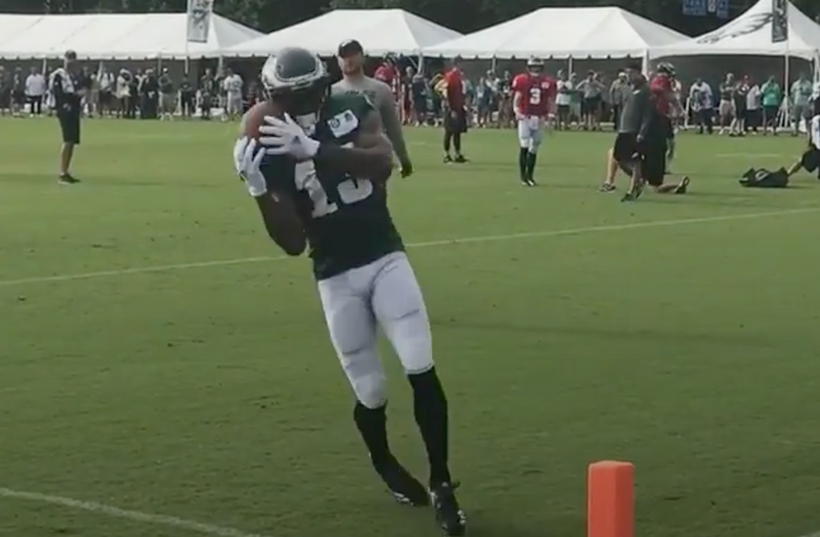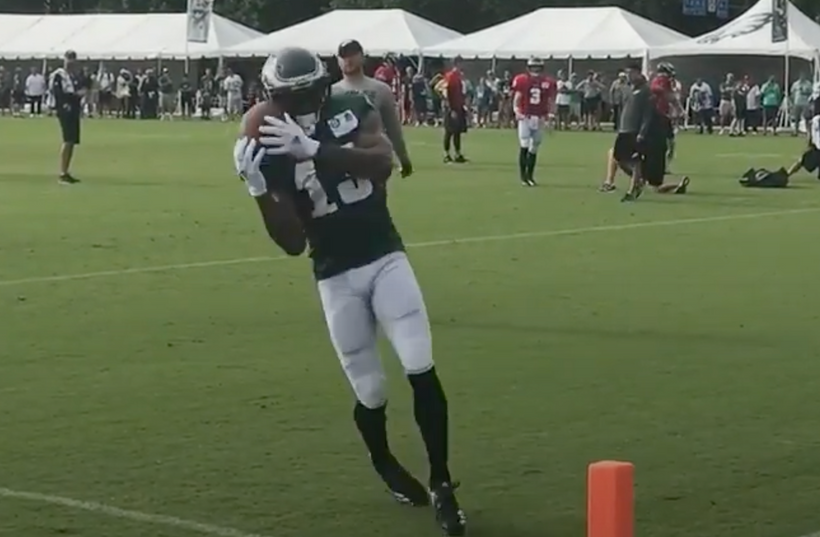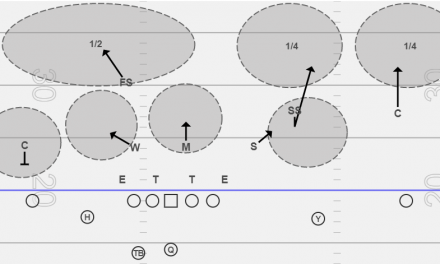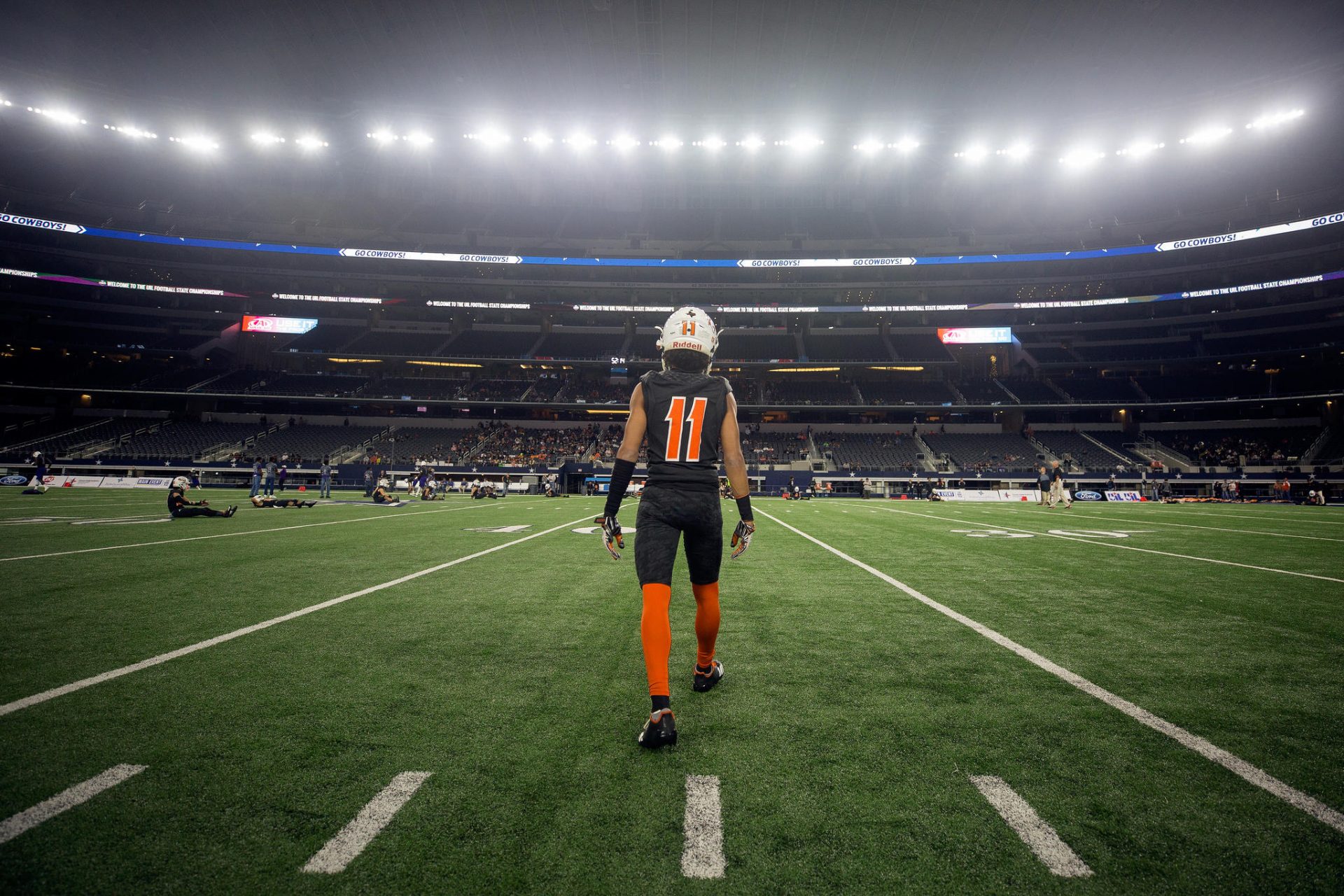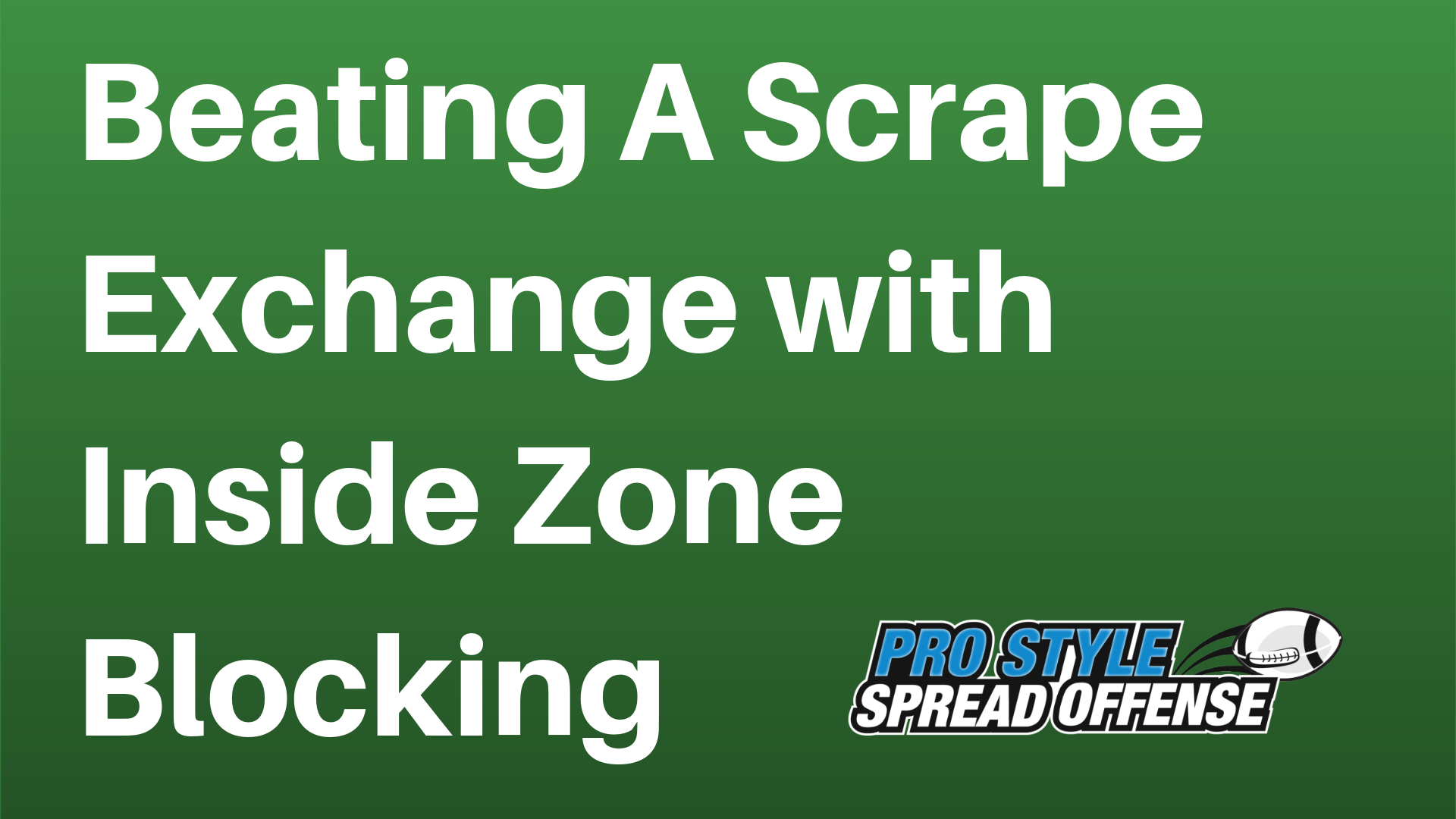The fade route is a popular play in football.
They can be game-changers when they are executed correctly because quite often, the receiver scores if he has any speed.
But, the percentages of fade routes completed are actually very low.
Most players never run it correctly because they start to fade too early toward the sideline.
Add the pressure of the play to the quarterback and not having enough room to complete it, and you can see why the percentages are low.
But when it is run correctly, it can be impossible to stop, even if the defender is playing it right.
Purpose Of Calling A Fade Route
A fade route is a type of pass in football that starts off with the quarterback throwing to a receiver running up the sidelines at full speed.
The ball will be thrown high so that it has a better chance of being caught and not intercepted by defenders.
Fade routes are typically run when there is little time left on the clock and a big play is needed. But, they can also provide an excellent opportunity for receivers because if it’s executed correctly, you have almost no chance to stop them from scoring.
Coaches also will call them when they believe they have a mismatch on a defender who might not be able to stop a better receiver.
How To Run The Fade Route
At the snap, the receiver should immediately drive out straight toward the Cornerback.
He shouldn’t try to completely avoid the defender by taking a path that’s too far to the outside or inside.
The goal is to force him to turn around and run with you.
Once he gets past the Cornerback, he should start running his Go route.
One thing receivers should do is to make sure that they keep at least seven yards between the defender and the sideline.
A good frame of reference is to not go past the bottom of the numbers.
While the Fade is a route that ends near the sideline, it won’t happen just yet.
‘Fading’ too early will leave too little room for the quarterback to drop it inbounds.
As he’s running downfield, he should try to lean into the defender if possible and the defender is probably pushing to widen him.
Of course, being too aggressive would be called offensive pass interference.
The ‘Fade’ should start to happen once the ball is at it’s highest point.
It’s initiated by the timing of the throw and not by the receiver’s route. This kind of timing takes a lot of practice and repetition to get right.
In most situations, quarterbacks are looking to place the ball 20-25 yards out from the line of scrimmage with a spot that is about 3-5 yards from the sideline.
This is why it’s so important for the receiver to run the vertical part of the route with enough space from the sideline.
When receivers get even or past the defender, they should start looking back over their shoulder and start to fade outside at about 15-18 yards deep near where they expect the ball to be thrown.
Tips For Coaching The Fade Route
The first thing I practice with receivers is the correct form on how to make an over-the-shoulder catch.
I show them how the ball goes over their head and then they can reach out with their outstretched arms to catch it, but still keeping their body between the defender and the ball.
A lot of receivers will have T-Rex arms and not reach out far enough to make the catch, even though they are in position.
To correct this problem, I teach them to catch it in the claw. That means that they curl their fingers into a claw shape and reach out far and wide with their palm up.
The goal is to try to have the tip of the ball hit their “claw” or even their wrist so they make sure to reach far enough.
The next step is to make sure they run the route properly.
Here I have them practice running the route without a defender and with a few cones located at 7 yards from the sideline that they have to run inside of.
They must clear the last cone before they can start to fade, so I place it starting at 15 yards. Faster athletes can go deeper if they need to.
Once I’ve coached up their form, then I teach them how far out from the sideline they need to be in order for it not turn into a jump ball situation where either player could win depending on who gets there first.
This is somewhere 2-3 yards from the sideline. The quarterbacks are taught to drop the ball there.
Finally, we will practice it with a live defender who tries to push them wider and they have to learn to resist without using their hands to push off and cause a penalty.
After the catch, it’s also good to practice not running or stepping out of bounds.
This is also a good key point to add to the over-the-shoulder catching drill you use early on.
As always, after a catch, the receiver must tuck the ball in before focusing on running.
Defenders will try to disrupt the catch by reaching up inside the receiver’s two arms and separating the hands.
Knowing this, the receiver has to fight to turn his back to the defender so he cannot get his hands inside his chest area.
Conclusion
In conclusion, the Fade Route is a popular play in football that’s very effective when executed correctly. Coaches often call it when they have mismatches on defenders and need to score quickly with limited time left in the game.
If you’re considering a fade route as a key part of your offense, make sure you have a good matchup of players before you call it.
Also, make sure you have practiced the timing of the route and your receiver can get a good release.
Lastly, make sure the defenders are not playing too deep over the top. In these situations, it’s really hard to call a fade route and execute it correctly at a high percentage of the time.

